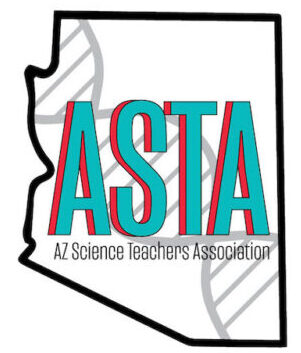Evolution Position Statement
ASTA offers the following background information:
Evolution as a Unifying Concept
Evolution in the broadest sense leads to an understanding that the natural world has a history and that cumulative change through time has occurred and continues to occur. If we look today at the galaxies, stars, the planet Earth, and the life on planet Earth, we see that the natural world today is different than in the past: galaxies, stars, planets, and life forms have evolved. Biological evolution refers to the scientific theory that living things share ancestors from which they have diverged; it is sometimes called “descent with modification.” Biological evolution also encompasses a range of mechanisms that cause populations to change and diverge over time, and include natural selection, migration, and genetic drift. There is abundant and consistent evidence from astronomy, physics, biochemistry, geochronology, geology, biology, anthropology, and other sciences that evolution has taken place.
As such, evolution is a unifying concept for science. The National Research Council’s A Framework for K–12 Science Education recognizes that there are crucial core ideas in the sciences that “have application across all domains of science” and that should be emphasized in classrooms to “prepare students with sufficient core knowledge so that they can later acquire additional information on their own” (NRC 2012, pp. 30–31). This report concludes that “the core ideas in the life sciences culminate with the principle that evolution can explain how the diversity that is observed within species has led to the diversity of life across species through a process of descent with adaptive modification” (NRC 2012, p. 140). Scientific disciplines with a historical component, such as astronomy, geology, biology, and anthropology, cannot be taught with integrity if evolution is not emphasized.
There is no longer a debate among scientists about whether evolution has and is occurring. There are various sources of evidence about how evolution does take place: What are the processes and mechanisms producing change, and what has happened specifically during the history of the universe? Scientists often disagree about their explanations. In any science, disagreements are subject to rules of evidence. Scientific conclusions are supported by evidence gathered through observation and experimentation and evolution, as with any aspect of science, is continually open to and subject to experimental and observational testing.
The importance of evolution is summarized as follows in the National Academy of Sciences publication Teaching About Evolution and the Nature of Science: “Few other ideas in science have had such a far-reaching impact on our thinking about ourselves and how we relate to the world” (NAS 1998, p. 21).
Declarations
Within this context, ASTA supports the NSTA recommendations that
● Science curricula, state science standards, and teachers should emphasize evolution in a manner commensurate with its importance as a unifying concept in science and its overall explanatory power.
● Science teachers should not advocate any religious interpretations of the natural world and should be nonjudgmental about the personal beliefs of students.
ASTA Evolution Position Statement
● Policy makers and administrators should not mandate policies requiring the teaching of “creation science” or related concepts, such as so-called “intelligent design,” “abrupt appearance,” and “arguments against evolution.” Administrators also should support teachers in resisting pressures to promote nonscientific views, to deemphasize or eliminate the study of evolution, or to misrepresent the nature of science and how questions in science are answered by asking students to consider the validity of evolution through a classroom debate.
● Administrators and school boards should provide support to teachers as they review, adopt, and implement curricula that emphasize evolution. Professional development designed to assist teachers in teaching evolution in a comprehensive and informed manner is an essential part of this support.
● Parental and community involvement in establishing and supporting the goals of science education and the curriculum development process should be encouraged and nurtured in our democratic society. However, the professional responsibility of science teachers and curriculum specialists to provide students with quality science education should not be compromised by censorship, pseudoscience, inconsistencies, faulty scholarship, political influences, or unconstitutional mandates.
● Science textbooks should emphasize evolution as a unifying concept. Publishers should not be required or volunteer to include disclaimers in textbooks that distort or misrepresent the methodology of science and the current body of knowledge concerning the nature and study of evolution.
—Adopted by the NSTA Board of Directors, July 2013
Sources:
National Academy of Sciences (NAS). 1998. Teaching about evolution and the nature of science. Washington, DC. The National Academies Press.
National Research Council (NRC). 2012 A framework for K–12 education. Washington, DC: The National Academies Press.
–Adopted by the ASTA Board of Directors, August 2018

